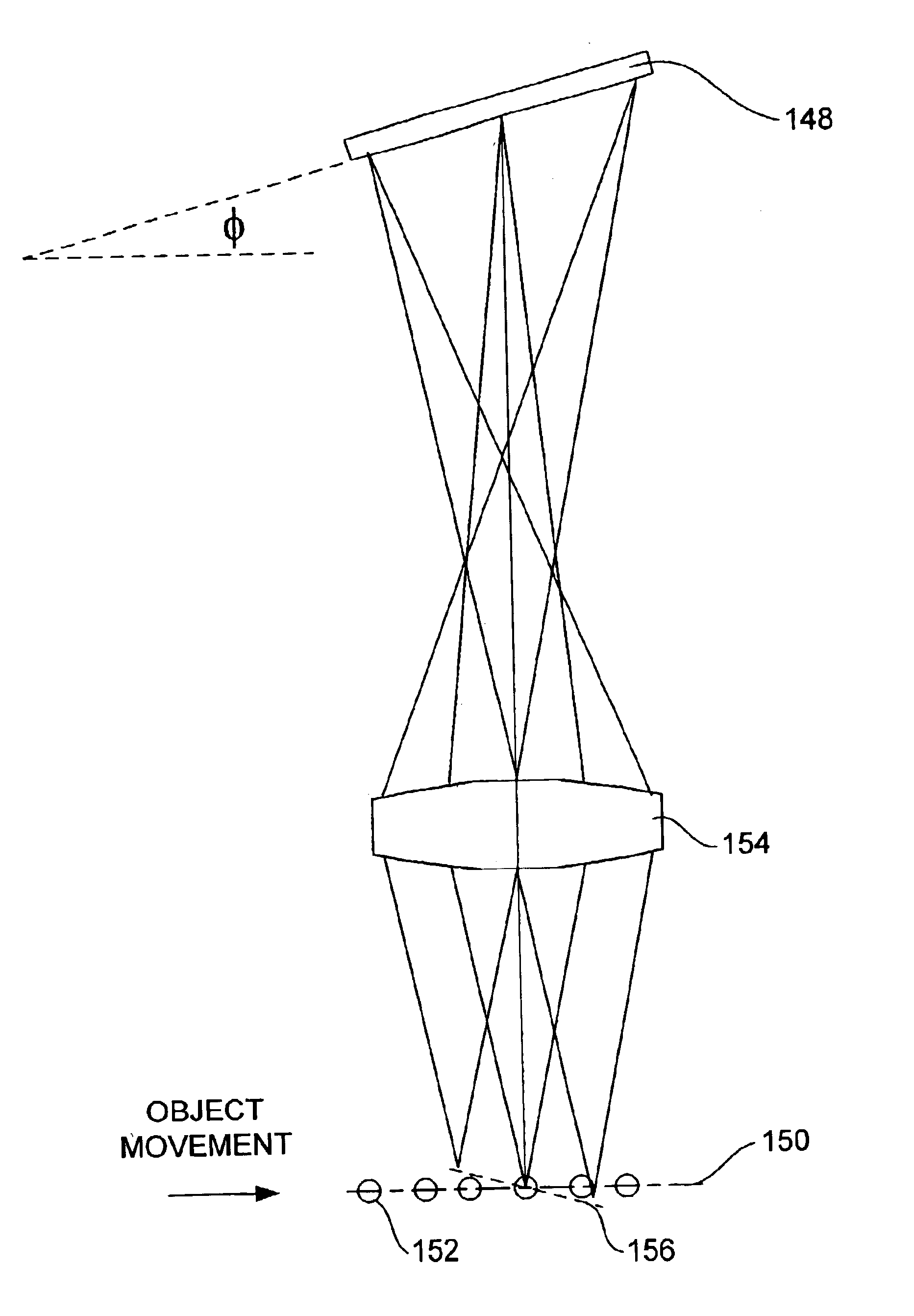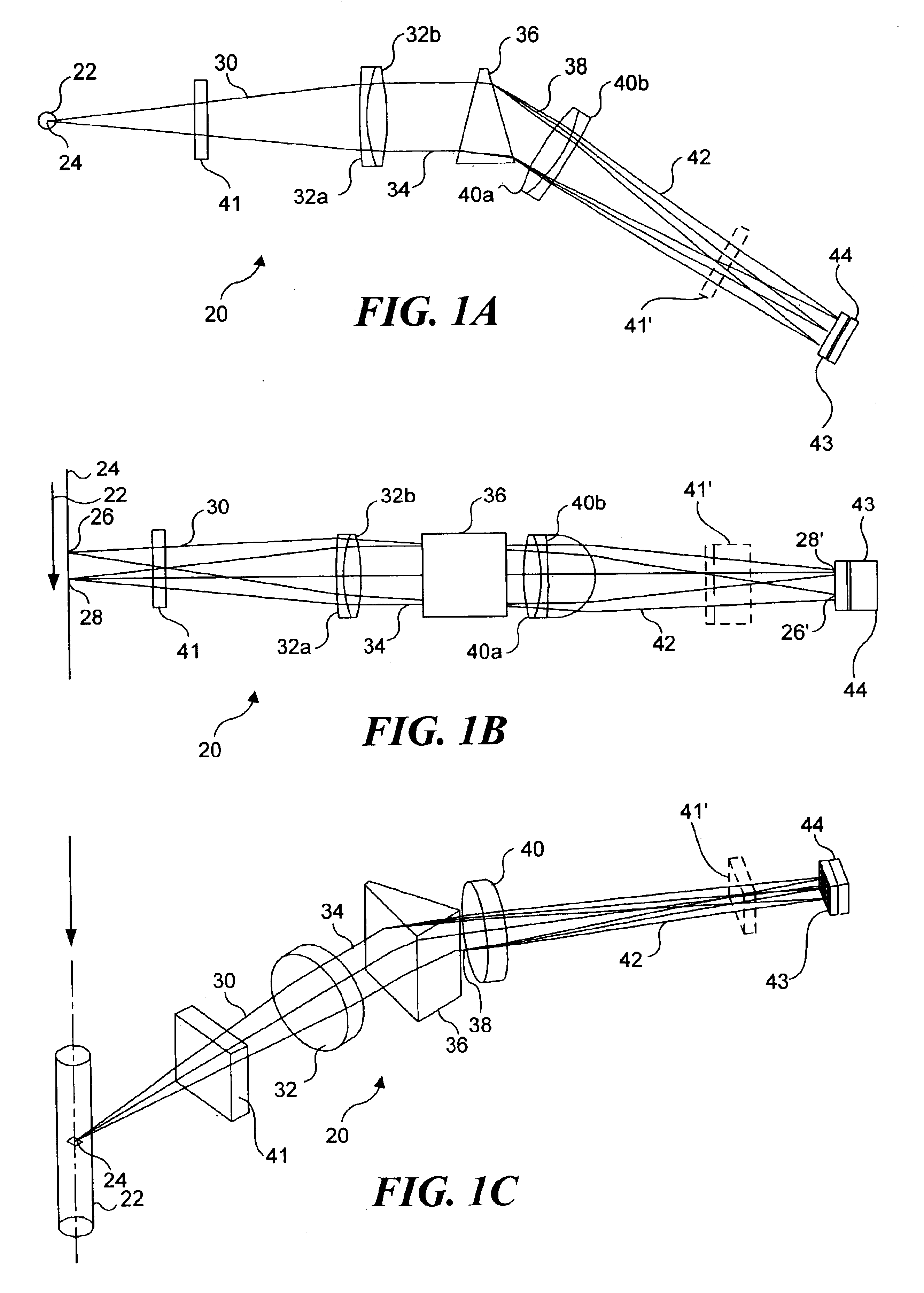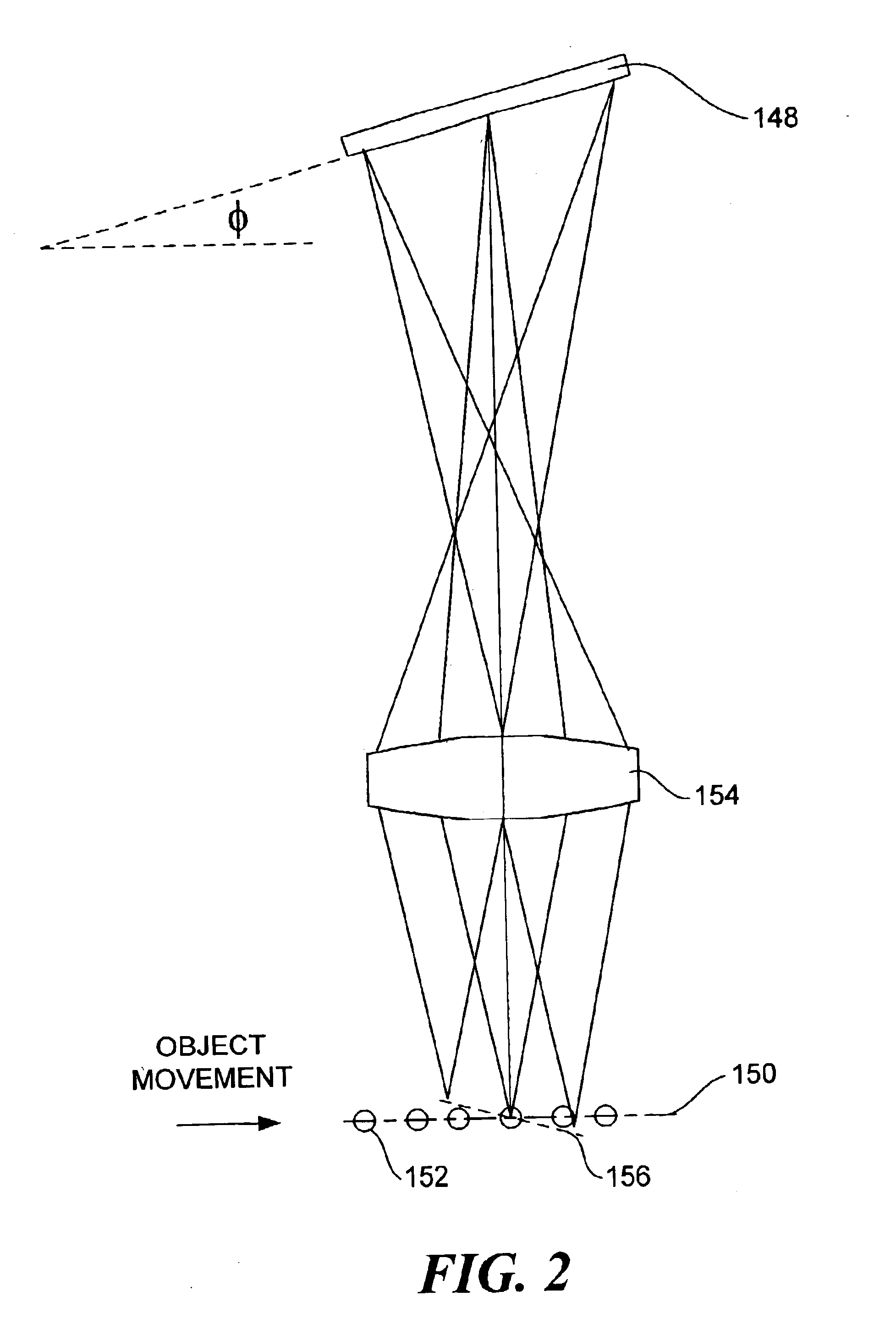Alternative detector configuration and mode of operation of a time delay integration particle analyzer
a particle analyzer and detector configuration technology, applied in the field of three-dimensional structure, contents, and spectral composition analysis of objects, can solve the problems of low numerical aperture, slow existing system for 3d cell imaging, and large number of biological and medical procedures that are currently impractical
- Summary
- Abstract
- Description
- Claims
- Application Information
AI Technical Summary
Benefits of technology
Problems solved by technology
Method used
Image
Examples
first preferred embodiment
[0037]In accord with a first preferred embodiment, TDI clocking is synchronous with the motion of the image of the object, the signal is detected continuously, and the TDI detector is oriented in a plane inclined relative to the axis of motion of the object. Such a configuration is shown in FIG. 2 and it includes a TDI detector 148 that is tilted at an incline angle φ relative to an object motion axis 150. An object 152 is traveling along object motion axis 150 and is imaged on TDI detector 148 by an imaging lens 154. The inclination of the detector plane produces an inclined plane of focus 156, as illustrated in the Figure. In this configuration, measurements taken at different times will have different planes of focus within the object. However, because the first preferred embodiment employs synchronous clocking and continuous detection, only a single image is formed. Synchronous clocking with an inclined detector requires a different clocking frequency than when the detector is p...
second preferred embodiment
[0042]Like the first preferred embodiment, the second preferred embodiment employs a TDI detector inclined at an angle φ relative to the apparent axis of motion of the object. However, unlike the first embodiment, in the second preferred embodiment, signal detection is discontinuous. Discontinuous detection can occur as a result of employing a pulsed laser or other type of pulsed or strobed light source to illuminate the object. If the object being imaged is chemiluminescent or if the light from the object is continuous for some other reason, such as the object being illuminated by a continuous light source, a shutter or gated image intensifier can be employed between the object and the detector to produce discontinuous detection, such as described above with reference to shutter 41 and gated image intensifier 43 in FIGS. 1A-1C.
[0043]Also, unlike in the first preferred embodiment, a signal readout from the TDI detector in the second preferred embodiment is asynchronous, such that th...
PUM
 Login to View More
Login to View More Abstract
Description
Claims
Application Information
 Login to View More
Login to View More - R&D
- Intellectual Property
- Life Sciences
- Materials
- Tech Scout
- Unparalleled Data Quality
- Higher Quality Content
- 60% Fewer Hallucinations
Browse by: Latest US Patents, China's latest patents, Technical Efficacy Thesaurus, Application Domain, Technology Topic, Popular Technical Reports.
© 2025 PatSnap. All rights reserved.Legal|Privacy policy|Modern Slavery Act Transparency Statement|Sitemap|About US| Contact US: help@patsnap.com



